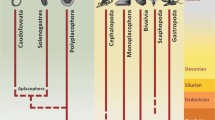Conclusions
No evidence of a definitely pathological nature was found during the course of these studies, although certain findings indicate that there are factors which may be considered as characteristic of mussels, and other similar bivalves, which are highly toxic. The quantities of poison present in the digestive diverticula of a single mussel were so small that its demonstration by histo-chemical methods was impossible. The observations have shown, also, that the mussels are not affected physiologically by the ingestion of this poisonous substance which is so highly toxic to warm blooded animals. However, these findings are taken from observations which have been made in a restricted area, and may be considerably in error if applied to another. Therefore, further studies must be carried on elsewhere and the results compared with these before conclusions may be drawn with any degree of certainty.
A direct relationship between the quantity and nature of the stored food material in the digestive diverticula and the seasonal variations in the plankton has been definitely established.
Similar content being viewed by others
Literature
Daniel, R. J.: Seasonal changes in the chemical composition of the mussel (Mytilus edulis). Liverpool University Lancashire Sea-Fisheries Laboratory Report, Nr 31, p. 27–50.
Field, I. A.: Biology and economic value of the sea mussel, Mytilus edulis. Bull. U. S. Bur. Fisheries, 38, 127–259 (1922).
Fox, D. L.: The habitat and food of the California mussel. Seripps Inst. of Oceanog. Bull. tech. Ser. 4, Nr 1, 1–64.
List, T.: Die Mytiliden des Golfes von Neapel. Fauna und Flora des Golfes von Neapel. 27. Monogr., Bd. 9, S. 312. 1902.
Meyer, K. F., H. Sommer and P. Schoenholz: Mussel Poisoning. J. prevent. Med. 2, 365–394 (1928).
Müller, H.: The chemistry and toxicity of mussel poison. J. of Pharmacol. 53, 67–89 (1935).
Sabatier, A.: Anatomie de la Moule commune, Mytilus edulis. Ann. des Sci. natur. (Zool)., VI. Ser., 5, 1–132 (1877).
Sommer, H., W. F. Whedon, C. A. Kofoid and B. Stohler: Arch. of Path. 24, 537–559 (1937).
Sommer, H. and K. F. Meyer: Arch. of Path. 24, 560–598 (1937).
Whedon, W. F.: Spawning habits of the mussel, Mytilus californianus Conrad, with notes on the possible relation to mussel poison. Univ. California Publ. Zool. 41, 35–44 (1936).
Whedon, W.F. and H. Sommer: Z. vergl. Physiol. 25, 523–528(1938).
Yonge, C. M.: The digestive diverticula in lamellibranchs. Trans. roy. Soo. Edinburgh 54, 703–718 (1926).
Author information
Authors and Affiliations
Additional information
Aided by Grants from the James Moffitt Fund.
Rights and permissions
About this article
Cite this article
Whedon, W.F. The digestive system of Mytilus californianus Conrad. Z. f. vergl. Physiologie. 25, 509–522 (1938). https://doi.org/10.1007/BF00338292
Received:
Issue Date:
DOI: https://doi.org/10.1007/BF00338292




